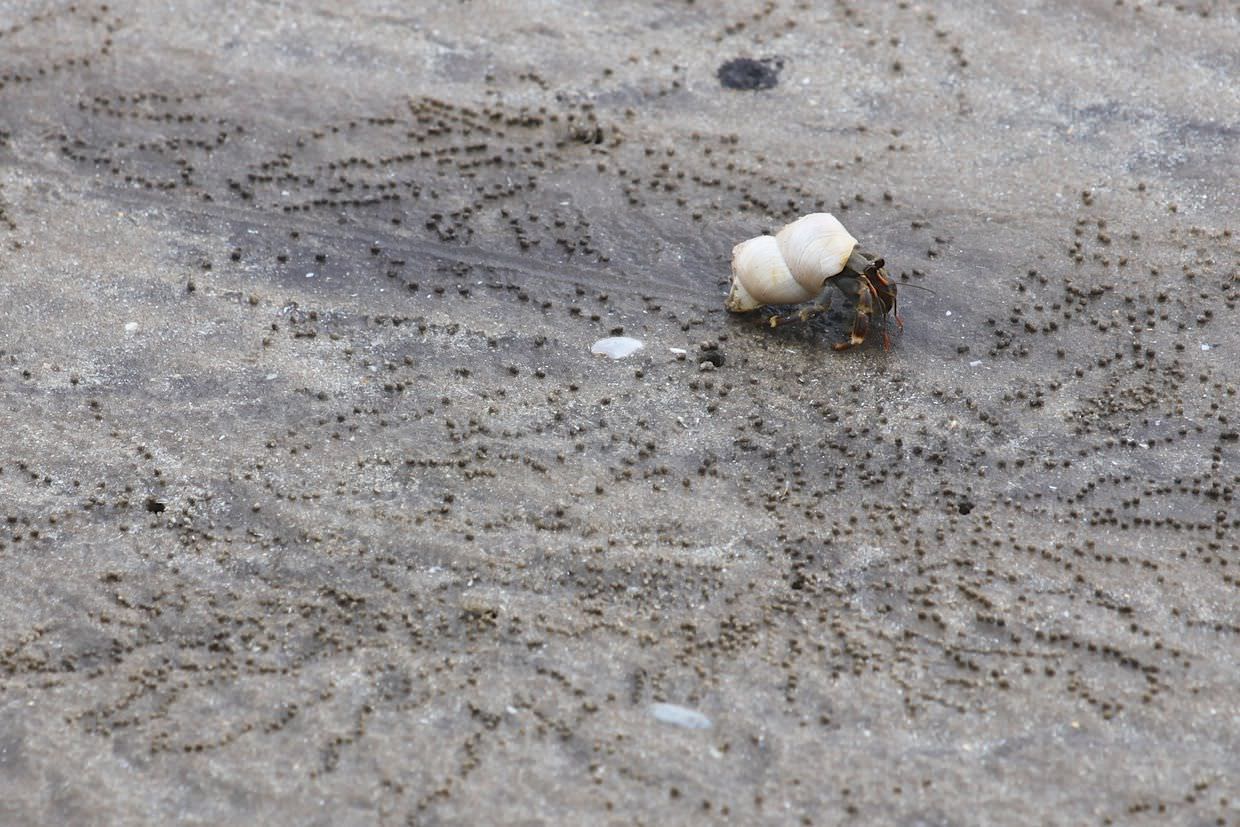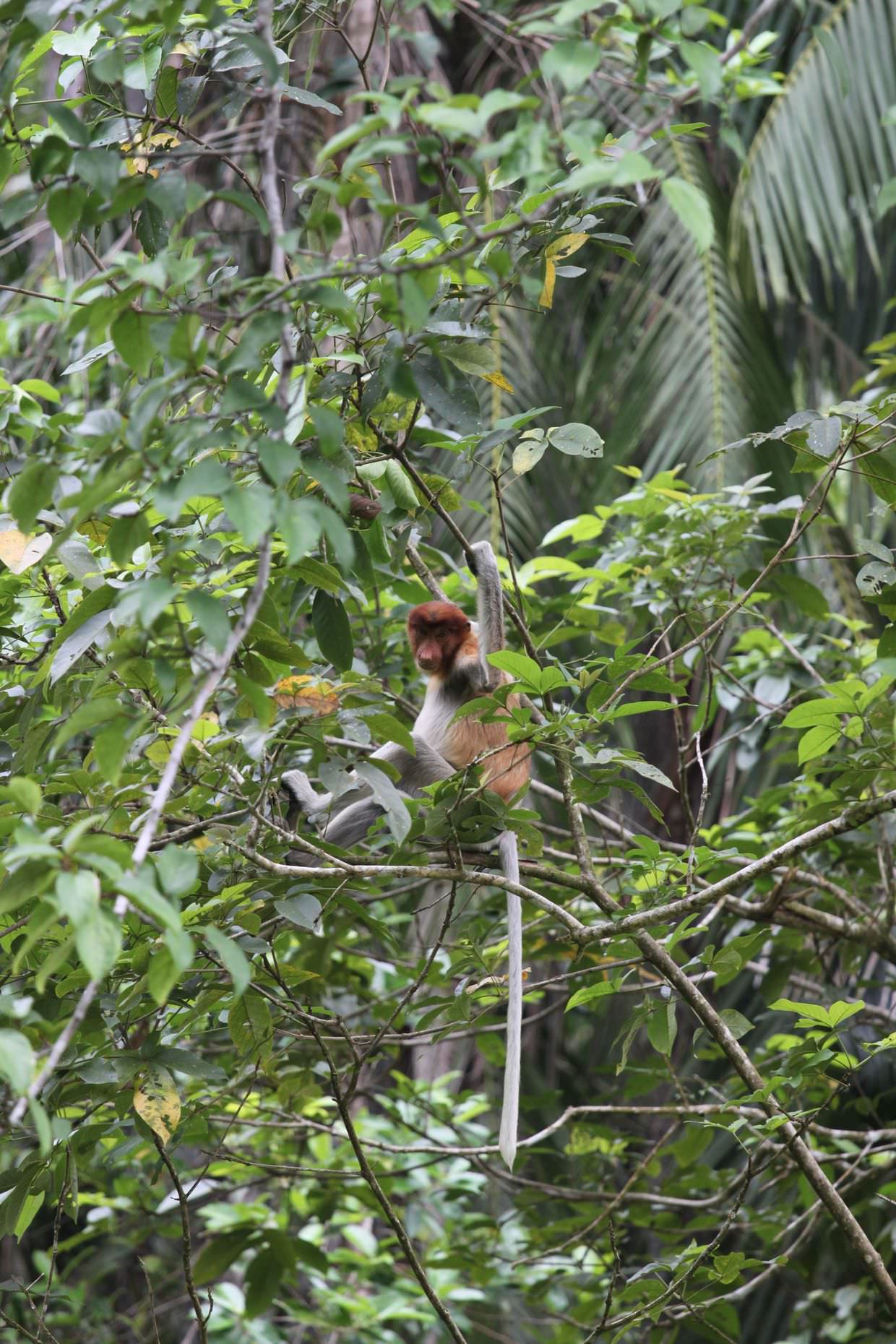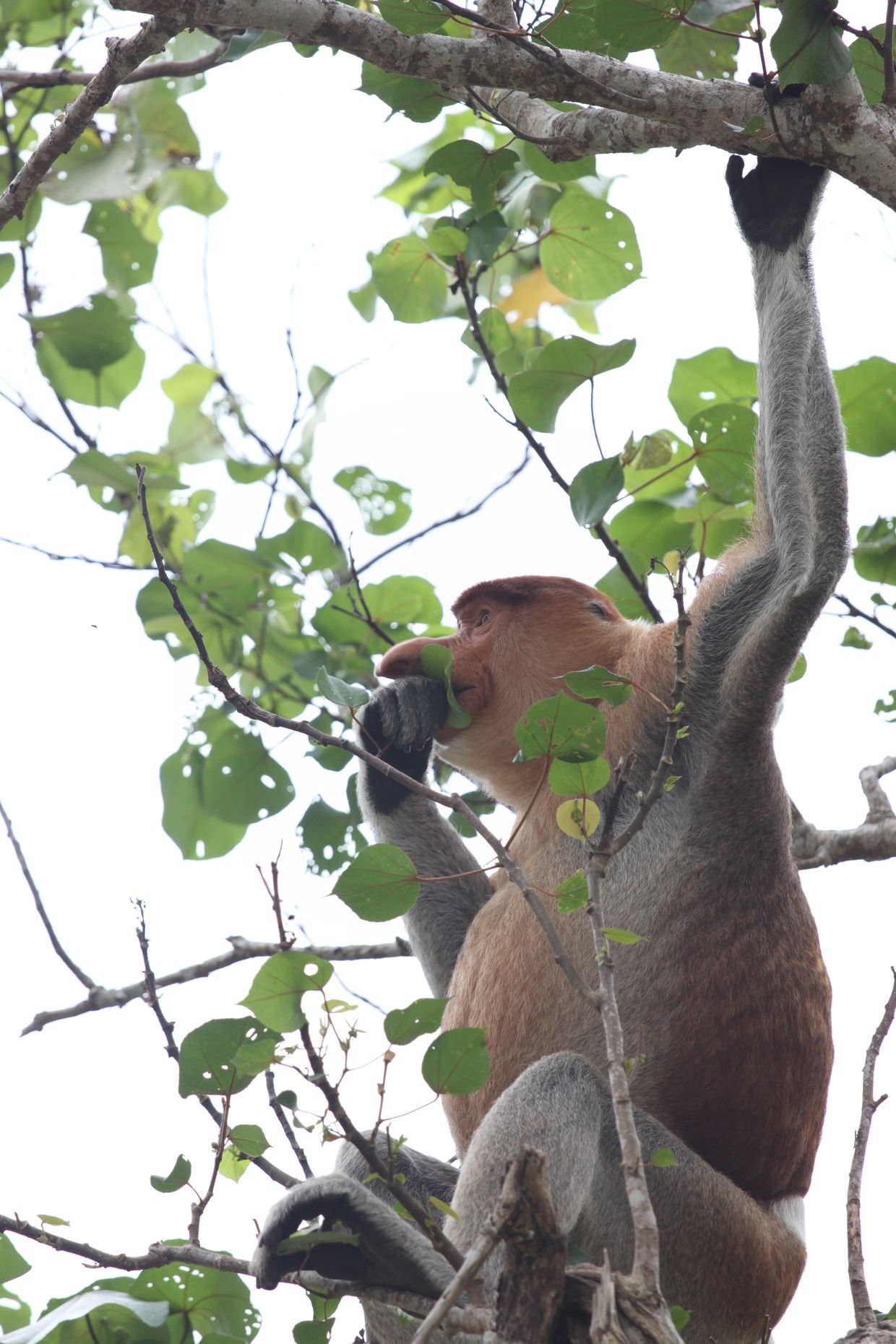Proboscis monkeys at Bako national park
Bako national park
After a traditional Sarawak Laksa breakfast at Sublime, we took the LimeTree minibus to Bako national park, for our first foray into the rainforests of Borneo. Bako national park is a peninsula that juts out into the South China sea, with protected coastline and mangrove forests, and it’s the best place to come and see the endangered Proboscis monkeys. It’s only a 40min drive from town and we were there by 7:30am. When you arrive there’s a small boat fee to take you around the coastline to the otherwise unreachable park HQ. We joined two french-canadians and a hungarian for the trip, and agreed to trek with them too.
On the drive in we passed through a heavy storm that lashed the minibus. We feared the day would be a washout; it remained overcast but the weather held out. We’d packed waterproofs just in case. They might have been handy for the boat trip too, had the sea not been so calm — waves still threatened to drench us. The boat arrived at a beach, it was low tide and the boat couldn’t get any closer; we had to hop out barefoot and wade to the wet sandy shore, where a thousand tiny crabs parted to let us through.
A friendly park-ranger (seemingly more knowledgable and helpful than the guides available at the boat port) had shown us the park trails and explained that the longer ones were closed due to flooding. Had we been thinking we might have hired his services. There’s over 17 trails available at the park, to begin we chose a short 3km trek (round trip) to a cove, the Telok Paku trail where, we were told, there’s a good chance of seeing monkeys.
Telok Paku trail (3km)
Wild Bornean bearded pigs meander about park HQ — before leaving we’d past three; mud cakes the thick hairs on their back, and flies cling on as they trot about. Around their nose long wispy hair dangles down, a thick bikers beard. They sniff and snort at the grass, and approached us before walking away disinterested.

From HQ the trail took us out beyond the smart looking lodges, boat jetty and boardwalk. Beneath the boardwalk, on the sand below, were funky big-armed fiddler crabs, large-shelled hermit crabs and mudskipper fish.

When walking in the rainforest be watchful of where you tread and where you put your hands. Along the hand rails ants and termites run up and down, ferrying whatever it is they ferry; tree trunks you might lean on, or slip and grab, come with four inch spikes that could impale you; and curly, dangling wooden vines might, if you’re especially unlucky, be a snake waiting for dinner.
The trail was hard on the ankles, gnarly slippery tree roots are everywhere, puddles hide the depth of holes, and there’s a little bit of climbing too. As recommended we wore proper boots, long-sleeved shirts and light trousers, but by mid-morning we were dripping with sweat, sleeves and trousers rolled up and red-faced. At trails end, by the beach, we welcomed the cooling sea breeze.


Proboscis monkeys
We didn’t see any monkeys, and on the way back we passed many who told us, “they’re all hanging out at park HQ”. We hurried back, we were headed there anyway for lunch. By the education centre I caught sight of someone staring into a tree, “just a bunch of proboscis” she explained. Two female proboscis were in the tree, they had a golden orange face and back which turned grey along their limbs. A sharp pointed nose markedly sticks out. From the treetops they crashed down with a racket onto the corrugated roof and swung away into the foliage. Wow.

Lintrang trail (5.6km)
Park HQ’s cafeteria was better than expected, and everything was seemingly priced at 6rm. Refuelled and ready to go we started the 5.6km Lintrang trail, which we expected to finish in about 3 hours. A bit of a push, but we needed to get back for the last boat of the day. It follows the Telok Paku route and then forks off and completes a large circle around park HQ. The path goes sharply upwards and the environment changes, from lowland rainforest to a sandstone plateau and heath — without shade. We started slowly, keeping an eye out for wildlife, but in the first hour we’d only covered about 1.5km; we picked up the pace and practically marched the rest. Along paths knotted with tree roots, up slippery boulders, through stretches of barren sandstone, down wobbly old wooden steps, through shadowy rocks and past cave entrances. At some points the path was riverlike, flowing with a sandy bed and a couple of inches deep.
There were red and pink berries, wild orchids, pitcher plants and wild durian trees, but marching through we saw little wildlife. Until a sudden “whooping” noise stopped us. It was loud and it sounded alarmed, we tried to trace where it came from, and discover what it was — a big bird maybe? a mammal? Following a dirt trail, and squatting down at a clearing, looking out across the valley we spotted a large monkey, much bigger than most long-tailed macaques, but a macaque nonetheless. It was agitated and by itself, and kept glancing over to where we were, it was fascinating to watch. Though it was ‘only’ a macaque, it was a very personal and unique interaction with a wild jungle animal — one we’d spotted amongst the foliage; we were by ourselves, and this experience was ours alone, and that was tremendously exciting. It made the entire 5km walk worth it.
Macaques and Proboscis on the beach
Back down by park HQ, back with plenty of time to reach the boat, we stumbled on our friendly park ranger again, he was showing around some professional looking photographers. We tagged along; he pointed out some more naughty macaques, and then, in the trees next to us and by the beach, more proboscis monkeys. Much closer this time, happy to ignore us, we crept very close to get photos. A family of five or six, and an alpha male, with his huge bulbous nose, bulging belly and unmissable bright red ‘appendage’. They’d been hanging around park HQ for much of the afternoon, and we might’ve been better sticking around there, rather than getting sweaty on a trek-cum-sprint.
After watching these monkeys for too long, though not long enough for our liking, we really did have to rush. Leaving the proboscis on the beach, we rejoined our Canadian friends for the boat trip back, a little sad not to be staying the night — though we had many more nature treks planned. At the port our driver was waiting, and soon enough we were being whisked back to our hotel by minibus.


John Brookes Bistro
Now aching, our legs unwilling to take us very far, we ate dinner at the waterfront restaurant, “John Brookes Bistro”. Set back from the water amongst trees and a garden, it creates an idyllic open veranda, free from the hustle and bustle of the city right behind it. We can’t get enough local Laksa.

Back at the hotel’s rooftop bar we had lime caipiroska cocktails, and called it a night